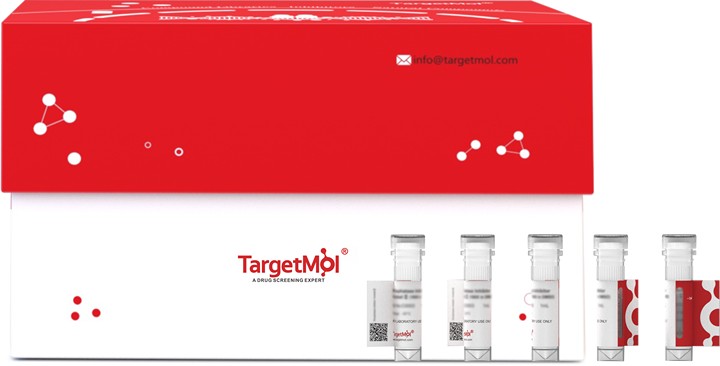Shopping Cart
- Remove All
 Your shopping cart is currently empty
Your shopping cart is currently empty

Varicella-zoster virus (strain Dumas) glycoprotein E/gE Protein (His & SUMO) is expressed in E. coli expression system with N-10xHis-SUMO tag. The predicted molecular weight is 85.4 kDa and the accession number is P09259.

| Pack Size | Price | Availability | Quantity |
|---|---|---|---|
| 20 μg | $1,500 | 20 days | |
| 100 μg | $2,750 | 20 days |
| Biological Activity | Activity has not been tested. It is theoretically active, but we cannot guarantee it. If you require protein activity, we recommend choosing the eukaryotic expression version first. |
| Description | Varicella-zoster virus (strain Dumas) glycoprotein E/gE Protein (His & SUMO) is expressed in E. coli expression system with N-10xHis-SUMO tag. The predicted molecular weight is 85.4 kDa and the accession number is P09259. |
| Species | HHV-3 |
| Expression System | E. coli |
| Tag | N-10xHis-SUMO |
| Accession Number | P09259 |
| Synonyms | gE,Envelope glycoprotein E |
| Amino Acid | SVLRYDDFHTDEDKLDTNSVYEPYYHSDHAESSWVNRGESSRKAYDHNSPYIWPRNDYDGFLENAHEHHGVYNQGRGIDSGERLMQPTQMSAQEDLGDDTGIHVIPTLNGDDRHKIVNVDQRQYGDVFKGDLNPKPQGQRLIEVSVEENHPFTLRAPIQRIYGVRYTETWSFLPSLTCTGDAAPAIQHICLKHTTCFQDVVVDVDCAENTKEDQLAEISYRFQGKKEADQPWIVVNTSTLFDELELDPPEIEPGVLKVLRTEKQYLGVYIWNMRGSDGTSTYATFLVTWKGDEKTRNPTPAVTPQPRGAEFHMWNYHSHVFSVGDTFSLAMHLQYKIHEAPFDLLLEWLYVPIDPTCQPMRLYSTCLYHPNAPQCLSHMNSGCTFTSPHLAQRVASTVYQNCEHADNYTAYCLGISHMEPSFGLILHDGGTTLKFVDTPESLSGLYVFVVYFNGHVEAVAYTVVSTVDHFVNAIEERGFPPTAGQPPATTKPKEITPVNPGTSPLLRYAAWTGGLAAVVLLCLVIFLICTAKRMRVKAYRVDKSPYNQSMYYAGLPVDDFEDSESTDTEEEFGNAIGGSHGGSSYTVYIDKTR |
| Construction | 31-623 aa |
| Protein Purity | > 85% as determined by SDS-PAGE. |
| Molecular Weight | 85.4 kDa (predicted) |
| Endotoxin | < 1.0 EU/μg of the protein as determined by the LAL method. |
| Formulation | Lyophilized from Tris/PBS-based buffer, 6% Trehalose, pH 8.0 |
| Reconstitution | A Certificate of Analysis (CoA) containing reconstitution instructions is included with the products. Please refer to the CoA for detailed information. |
| Stability & Storage | Lyophilized powders can be stably stored for over 12 months, while liquid products can be stored for 6-12 months at -80°C. For reconstituted protein solutions, the solution can be stored at -20°C to -80°C for at least 3 months. Please avoid multiple freeze-thaw cycles and store products in aliquots. |
| Shipping | In general, Lyophilized powders are shipping with blue ice. Solutions are shipping with dry ice. |
| Research Background | Envelope glycoprotein that binds to the potential host cell entry receptor IDE.; In epithelial cells, the heterodimer gE/gI is required for the cell-to-cell spread of the virus, by sorting nascent virions to cell junctions. Once the virus reaches the cell junctions, virus particles can spread to adjacent cells extremely rapidly through interactions with cellular receptors that accumulate at these junctions. Implicated in basolateral spread in polarized cells. In neuronal cells, gE/gI is essential for the anterograde spread of the infection throughout the host nervous system. Together with US9, the heterodimer gE/gI is involved in the sorting and transport of viral structural components toward axon tips.; The heterodimer gE/gI serves as a receptor for the Fc part of host IgG. Dissociation of gE/gI from IgG occurs at acidic pH. May thus be involved in anti-VZV antibodies bipolar bridging, followed by intracellular endocytosis and degradation, thereby interfering with host IgG-mediated immune responses. |

Copyright © 2015-2025 TargetMol Chemicals Inc. All Rights Reserved.